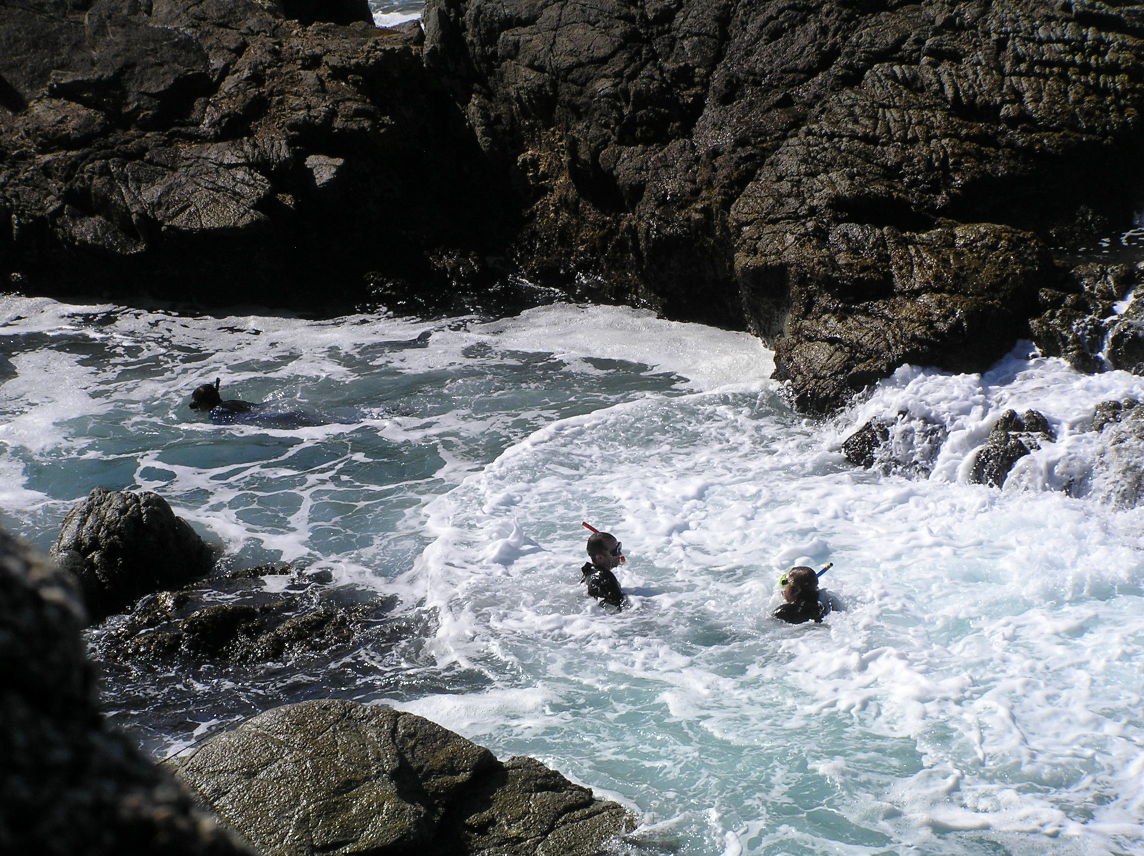
I can’t wait to go back to California to do this again. Our trip to the tide pools at Swami’s Beach was an enjoyable and relaxing couple of hours in a busy week. They moved slowly under the water, eating the seaweed surrounding and hiding them. They were at least eight inches long and four inches in diameter. The most excellent find was the sea slugs. Answer 1 of 8: Is there any place on the bay that is known for good tide pools Asking for my 9 and 11 year old naturalist sons. He was very shy and hid under the rocky ledge when my shadow passed over the tide pool. His head was about two inches long, but if he had spread out his legs, he would have been about seven or eight inches long. Mike was much better at spotting animals than I was. There were many hermit crabs and other shellfish. These two were safely hidden in the tide pools. Some of them were exposed by the low tide and dried up quickly. He became a dinner for a bird before we left the beach. This shore crab didn’t make it through low tide. It felt like the water was filled with gold.

I don’t know if it was some sort of polution or a local ore. There was a sort of shimmer to the water. You can look over the side of ledges also. Look for areas that are like holes in the ground that hold water while the tide is low. Here are some good examples of tide pools. Seaside Towns of Carmel and Monterey 17-Mile Drive Californias Central Coast is known for its beauty. Some of the wildlife isn’t lucky enough to find a tide pool. On the stairs, the city of Encinitas had posted this sign about the wildlife that we might be able to see. When we got closer, these rocky areas were to the north of the staircase. Here’s the view from the top of the stairs. We went to Swami’s Beach in Encinitas, California. We didn’t see any starfish, but we saw enough wildlife to truly understand the joy of watching the ocean.

What you see depends on where you are looking. You can actually go into the REAL world and see local sea life. Sea creatures hide out in them until the tide comes back. They are spots on the ocean that hold water even at low tide. Our friends live in Cardiff By The Sea and they were eager to tell us about the joys of tide pools. You know… you go to the aquarium and the tide pool is the spot where they let you touch the starfish and sea cucumbers, right? Common rocky shore animals and plants of central CaliforniaĪ teaching tool created by Stanford University's Hopkins Marine Station.I didn’t know tide pools were anything but interactive spots at Sea World and the Monterey Bay Aquarium. In this field program, students and volunteers are trained to study and monitor the rocky and sandy shores of the marine sanctuary.

Rocky shore and tide pool information from the sanctuary's Site Characterization LiMPETS Rocky shore and tide pool information from the Sanctuary Monitoring Network Site Characterization Dress in layers and bring sunscreen and sunglasses. Wear sturdy shoes or rubber boots that can get wet. Keep an eye out for waves, and don't turn your back on the ocean. Enjoy seashore life in its natural environment and leave the plants and animals exactly as you found them. Strict laws govern collecting tide pool life. If you touch an animal or plant, touch it gently. Most rocks are covered with living animals and plants. When you visit tide pools, do your part to preserve this special place: A simple act like turning over a rock and exposing the animals to the sun can harm them. Tide Pool TipsĪlthough tide pool creatures can survive harsh conditions, human visitors can easily disturb them. The Monterey Bay Sanctuary offers some of the best tide pooling in the world! Learn about a few of the top tide pool locations to visit. Generally early summer mornings and late fall and winter afternoons have the year's lowest tides.

Tides listed in minus feet are the lowest and best for tide pooling. They can be found at a local surfing, boating or other marine related businesses. To choose a good day for tide pooling, use a tide table showing the times and tidal heights of all high and low tides throughout the year. Tide pools are best explored at low tide. Meet some of the fascinating plants and animals that survive in this rugged and changing seascape. During low tide, it's a great place to discover sea life without getting wet! Tide Pool Life Looking for an exciting ocean adventure? Go no further than the sanctuary's rocky shores and tide pools.


 0 kommentar(er)
0 kommentar(er)
